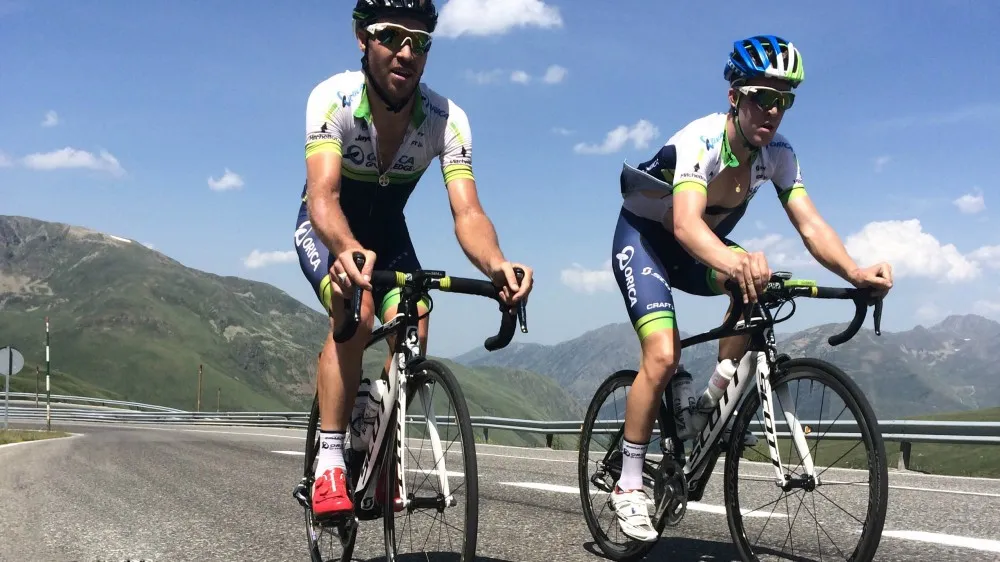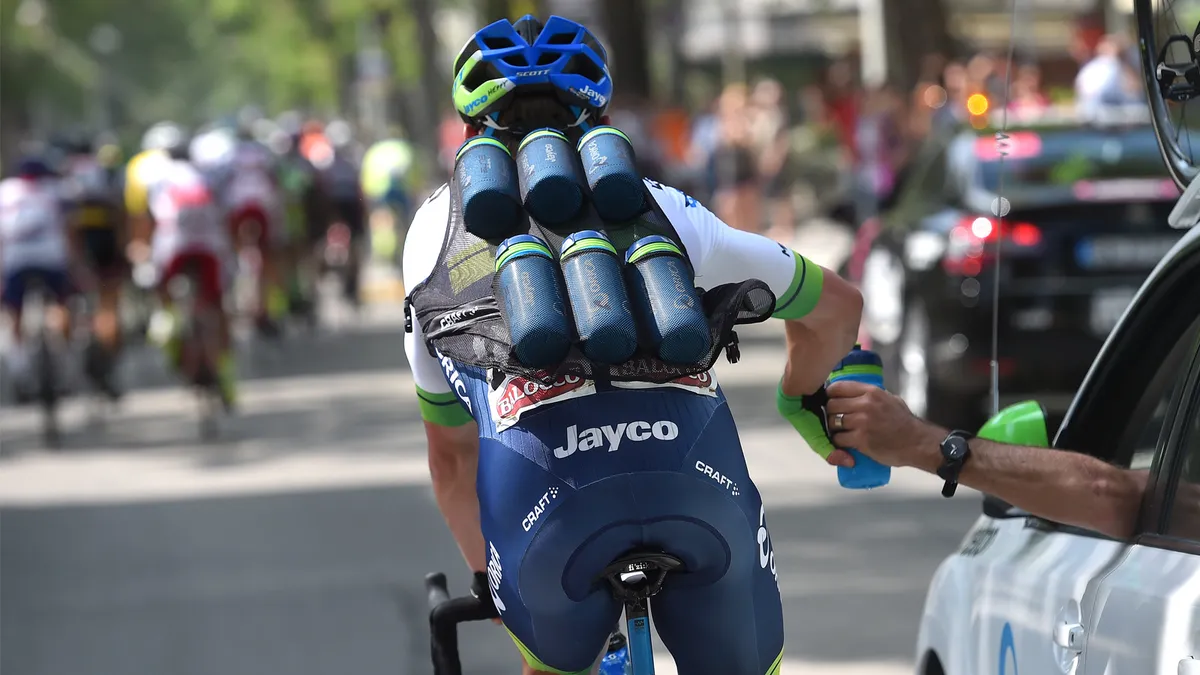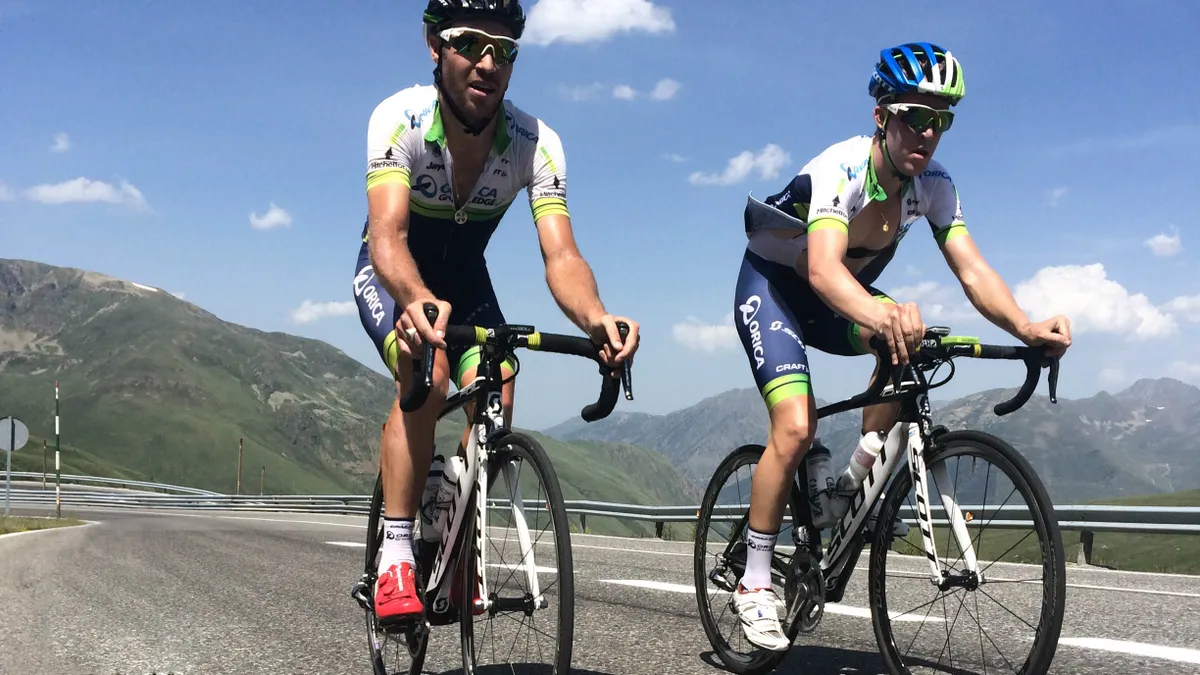There are some amazing minds bringing a new wave of fresh information on fueling and it’s a game changer. Recently I went with one of my athletes to test his sweat sodium loss during hard bouts of exercise with Allen Lim, brains and founder behind Skratch Labs. Lim has a PhD in exercise physiology and a long history of working with cycling’s top Grand Tour riders.
We were looking for cutting edge data on this athlete’s sodium needs in races and his fueling requirements. Post discussion with Lim, the athlete and I came to the conclusion that it's a balance between calories ingested, sodium and, most importantly, hydration.
Don't forget to check out more of our Training Day by Day features.
Hydration
When you exercise, the hypothalamus in your brain triggers the sweat response as a way to moderate body heat – through evaporative cooling. Sweat is a mixture of water, sodium chloride and other electrolytes (potassium, calcium and magnesium), which are pulled from your blood. When you become dehydrated, your blood volume decreases and your core temperature rises above optimal temperatures. Your blood vessels dilate, which further decreases your relative blood volume – a phenomenon known as relative hypovolemia. This drops your blood pressure and puts more strain on your cardiovascular system as your heart attempts to pump less blood through a larger relative space – working harder for less result.
For most athletes, at a core body temperature above 39C, the central nervous system begins to shut down. Often referred to as central fatigue, this results in a significant drop in performance and, in severe cases, a very dangerous situation to your health.
Put more simply, consider that drinking is like putting coolant into your car to stop it from overheating. The difference is, your car works on a sealed system, but your body doesn't as it's constantly losing fluid through sweat.
So how much is enough? The best way to find out is to weigh yourself before and after exercise and calculate the loss. This will vary with different weather conditions. At a 3 per cent loss from dehydration, your maximal aerobic power (VO2 max – the body’s maximal capacity to use oxygen during intense exercise) decreases by about 5 per cent. This is only 2.1kg (4.6lb) for a 70kg (154lb) person, or 2.7kg (6lb) for a 90kg (198lb) person. At a 7 per cent body weight loss, you're likely to collapse and death can occur if you lose over 10 per cent through dehydration!
You can quickly see how the hard work you put into improving your fitness can be quickly negated. The cardiovascular system is designed not only to provide oxygen to your working muscles, but also to remove waste – primarily carbon dioxide and heat. So, heat not only causes us to sweat, causing us to lose precious fluids, it also puts a greater strain on the cardiovascular system, which is also trying to deliver oxygen (performance!) to your muscles.
I've seen athletes' drinking rates during workouts vary greatly, but the majority of the time, they're under hydrating. A common misconception is to drink one bottle of fluid each hour, 600-700ml. It's likely that this is barely 50 per cent of your needs so it's important to identify your individual hydration requirements.
Many people complain about stomach issues or a bloated feeling when consuming higher amounts of water. This is often because the carbohydrate concentration in the sports drink they use is too high. In Dr Lim’s experience working with Grand Tour riders, he found that the average athlete can only handle up to a 4 per cent concentration, 4g in every 100ml of fluid. So look for a quality hydration product that fits this description.
Sodium
Something to keep in mind is that there's an ideal range of hydration for everyone and that there is, in fact, a danger in drinking too much. Hyponatremia is where drinking too much plain water causes the sodium concentration in a person’s blood to become too low. To overcome this, it's advisable to simply introduce electrolytes into your fluid intake during exercise. This is where sports drinks come into their own.
The average sodium loss during exercise is 700-800mg per liter of fluid lost, but Lim advises that this can vary by as much as 300-2,000mg. Asides from doing a sodium test on yourself to identify your needs, simply, if you crave salt as an athlete, look to satiate that craving.
Calorie Intake

Mitch Docker and Cameron Meyer are two of DaybyDay's WorldTour athletes. What applies to them may not be applicable, so you must find what works for you
The number of calories you need to consume during exercise depends upon the duration of the session and your workload. This is where a power meter comes in very handy, as it's a great estimator of energy expenditure. For example, at 150W = 524cal/hr, 200W = 720cal/hr, and 300W (world class!) = 1,080cal/hr.
Alternative methods of determining your energy expenditure, while not as accurate but better than nothing, are: the energy function on your heart rate monitor, or with an online energy expenditure calculator. Here, keep in mind that burning 1,000 calories an hour is at the level of racing the Tour de France, so use this as an upper ceiling reference point.
The body stores between 1,500-2,500 calories of carbohydrates, so when you're starting fully fueled it’s not necessary to ingest any calories if your ride is under two hours of length. When your ride is longer than this, look to consume at least 50 per cent of the calories you're burning each hour – somewhere between 60-100g of carbohydrates.
Know your needs
Our coaches are all about optimal performance and hyrdrating is one of the most critical elements of this. Begin by identifying and meeting your fueling needs, using a high quality, light caloric, electrolyte solution. Then educate yourself about the nutrient content of the foods that you eat (read the label) on your ride and consume adequate amounts for the duration and intensities that you're riding. Do this and I promise you'll be finishing stronger!
Ben Day started DaybyDay Coaching in 2008 to share his experience as a 13-year international professional cyclist with endurance athletes of all levels. An ex-national champion, he recently retired from racing professionally with the UnitedHealthcare Pro Cycling team to focus on delivering the DaybyDay Coaching service to amateur athletes and professionals, first time racers, to WorldTour professionals.
In future articles, Ben Day, Chris Baldwin and new DaybyDay Coach, Jeremy Hunt, will continue to share with you methods for improving your cycling, whether mental, physical or technique related. Do you have any tricks that you use or questions for future articles? Share them with the guys on Twitter – their handle is @daybydaycoachin and join the DaybyDay Coaching community.

